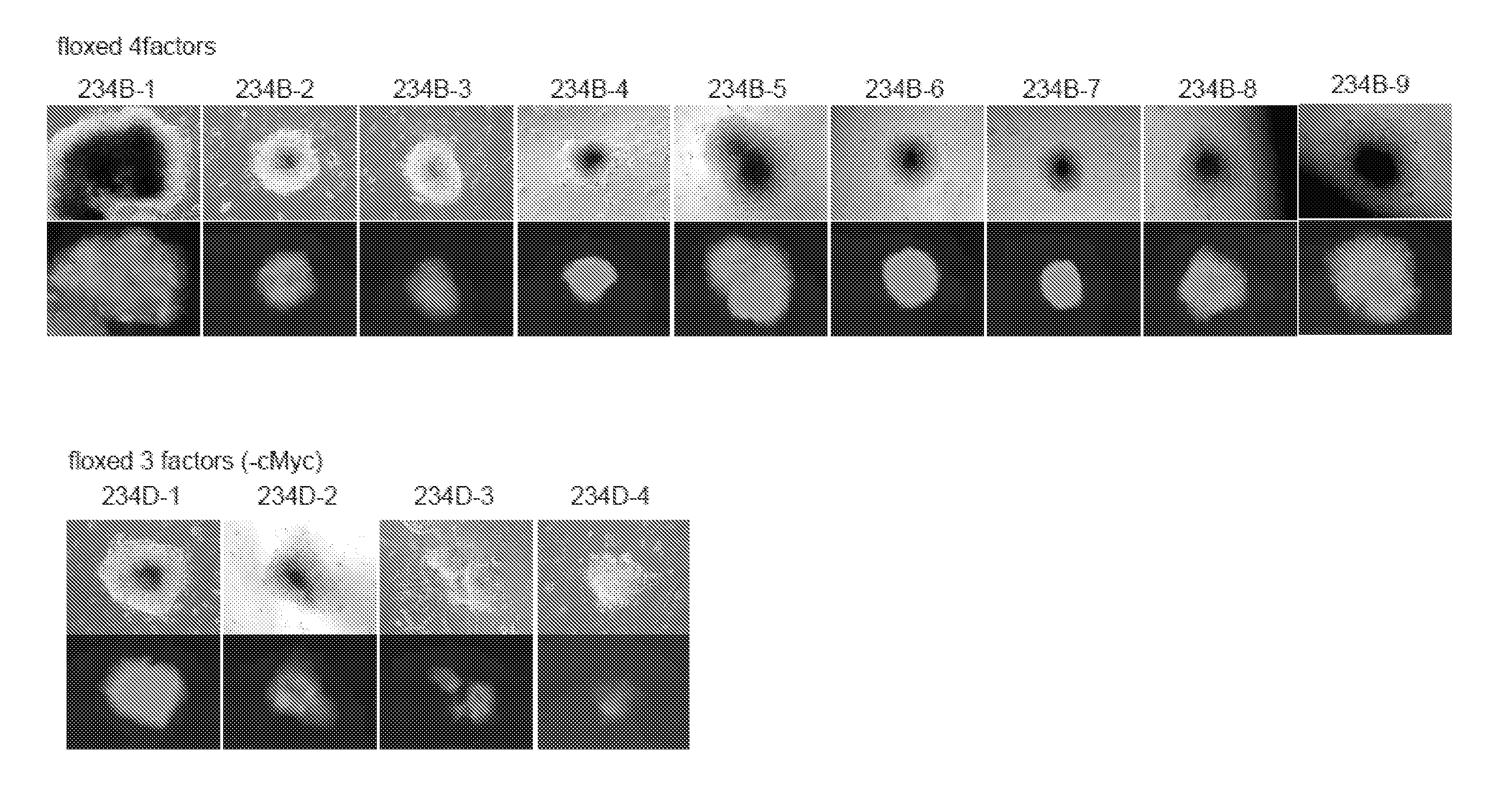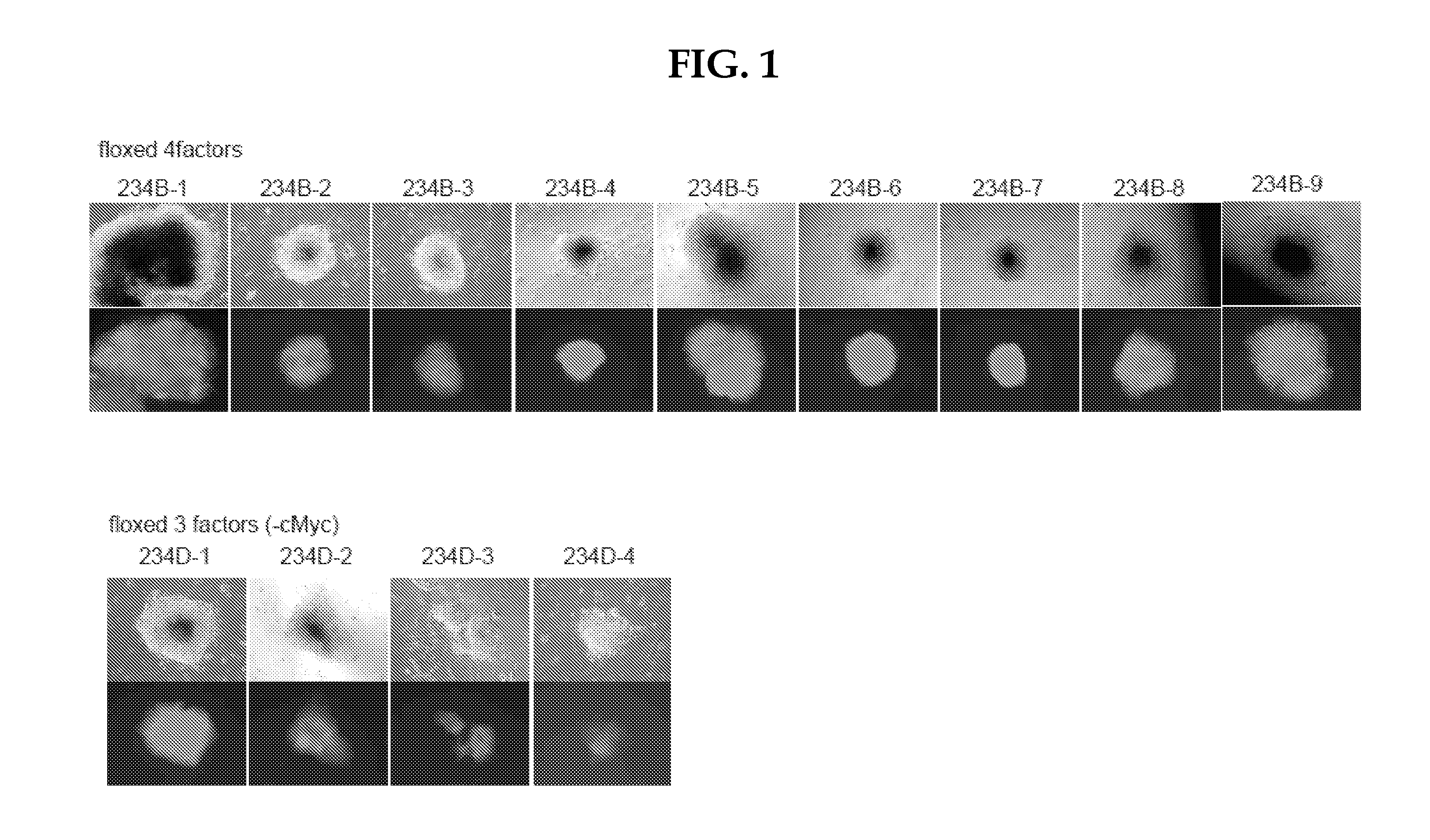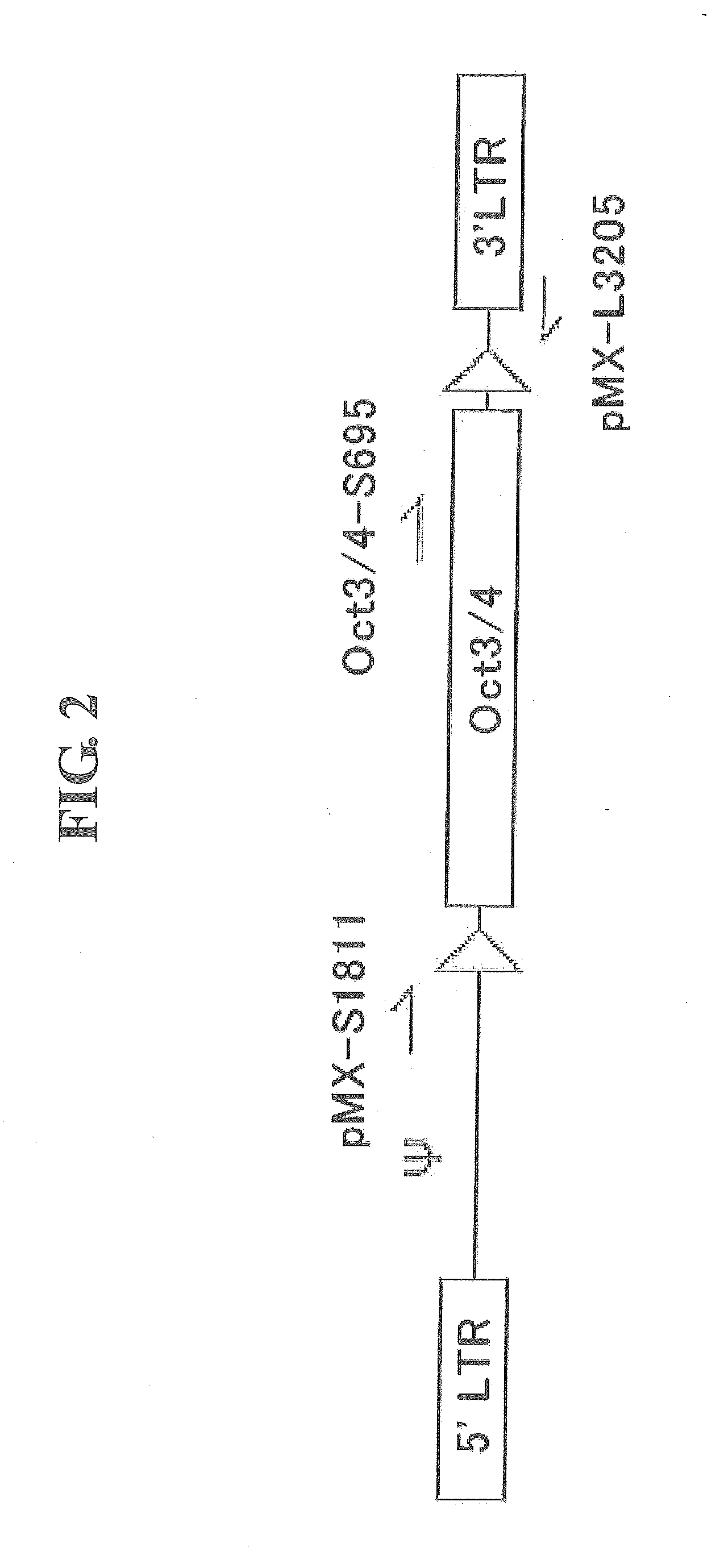Method of preparing induced pluripotent stem cells deprived of reprogramming gene
- Summary
- Abstract
- Description
- Claims
- Application Information
AI Technical Summary
Benefits of technology
Problems solved by technology
Method used
Image
Examples
example 1
Preparation of Reprogramming Gene Expression Retrovirus Vectors Harboring loxP Sequences
Retrovirus vectors used for reprogramming were prepared using pMXs (obtained from Professor Toshio Kitamura at the University of Tokyo; Exp. Hematol. 31; 1007-1014, 2003). Constructs were prepared by flanking each of the coding regions of mouse-derived Oct3 / 4, Sox2, Klf4 and c-Myc with loxP sequences (5′-ataacttcgtatagcatacattatacgaagttat-3′, SEQ ID NO:1). Each of the constructs was inserted into a multicloning site of the vector, whereby retrovirus vectors that express the respective reprogramming genes were prepared (pMXs-Oct3 / 4-loxP, pMXs-Sox2-loxP, pMXs-Klf4-loxP, pMXs-cMyc-loxP). Likewise, constructs were prepared by flanking each of the coding regions of mouse-derived Oct3 / 4, Sox2 and Klf4 with mutant loxP sequences, and each of the constructs was inserted, whereby retrovirus vectors that express the respective reprogramming genes were prepared (pMXs-Oct3 / 4-mloxP, pMXs-Sox2-mloxP, pMXs-Klf4...
example 2
Induction of IPS Cells from Mouse Hepatocytes (Exp. Nos. 234 and 296)
Hepatocytes from a Nanog reporter mouse (Okita K. et al., Nature 448, 313-317 (2007)) were used in the experiments. This mouse has a Nanog reporter prepared by integrating green fluorescent protein (EGFP) and the puromycin resistance gene into the Nanog gene locus of a BAC (bacterial artificial chromosome) purchased from BACPAC Resources. The mouse Nanog gene is expressed specifically in pluripotent cells such as ES cells and early embryos, and mouse iPS cells positive for this reporter have been shown to possess a differentiating potential nearly equivalent to that of ES cells.
1.25×105 hepatocytes from the Nanog reporter mouse were sown onto each well of a 6-well culture plate containing previously sown feeder cells (puromycin- and hygromycin-resistant MSTO cells, hereinafter simply referred to as MSTO cells). The cells were cultured in DMEM / 10% FCS culture broth at 37° C. and in the presence of 5% CO2. Two days l...
example 3
Induction of IPS Cells from Mouse-Derived Fibroblasts (Exp. No. 283)
A mutant mouse having both a Nanog reporter and Fbx15 reporter was prepared by mating a Nanog reporter mouse (Okita K. et al., Nature 448, 313-317 (2007)) and an Fbx15 reporter mouse (Tokuzawa et al. Mol Cell Biol, Vol. 23, 2699-2708 (2003)). MEFs from this Fb / Ng reporter mouse were sown to a gelatin-coated 6-well culture plate at 1×105 cells / well. In the same manner as Example 2, 3 different retrovirus vectors consisting of pMXs-Oct3 / 4-mloxP, pMXs-Sox2-mloxP and pMXs-Klf4-mloxP were introduced into the cells.
On day 25 of viral infection, selection with puromycin (1.5 μg / mL) was started. On day 33, colonies were picked up. Photographs of colonies as of the time of establishment are shown in FIG. 8. Photographs of colonies of the 2nd subculture are shown in FIG. 9. The colonies obtained exhibited a typical ES-cell-like morphology and tested positive for GFP, demonstrating the establishment of iPS cells.
Subsequently, ...
PUM
| Property | Measurement | Unit |
|---|---|---|
| Current | aaaaa | aaaaa |
Abstract
Description
Claims
Application Information
 Login to View More
Login to View More - R&D
- Intellectual Property
- Life Sciences
- Materials
- Tech Scout
- Unparalleled Data Quality
- Higher Quality Content
- 60% Fewer Hallucinations
Browse by: Latest US Patents, China's latest patents, Technical Efficacy Thesaurus, Application Domain, Technology Topic, Popular Technical Reports.
© 2025 PatSnap. All rights reserved.Legal|Privacy policy|Modern Slavery Act Transparency Statement|Sitemap|About US| Contact US: help@patsnap.com



